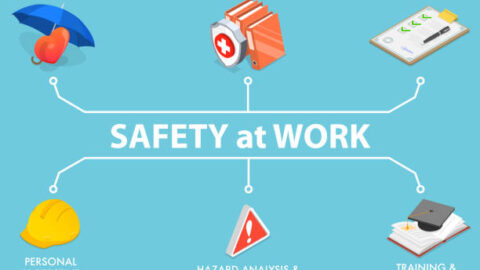How the Demand for Nurses is Affecting Healthcare Education
One of the major problems facing the modern healthcare landscape is the widespread nursing shortage. Sadly, estimates show that this problem is likely to get even worse as we venture into the future. As a result of this disheartening shortage, many things are changing in the American healthcare system. One specific aspect that is having to evolve is healthcare education. From ABSN to BSN programs, the nursing shortage is having irreversible effects. Understanding how the education sector is responding to the nursing shortage is key to gaining a broader perspective on how the nursing shortage is being addressed in today’s world. Here is how the demand for nurses is affecting healthcare education.
Table of Contents
An Increase in Accelerated Programs
Given the significant need for a large influx of qualified nurses into the field, many healthcare education institutions are now offering accelerated programs. Essentially, these programs require students to take on a larger workload over a shorter duration of time. Hence, allowing them to become qualified to work as nurses in a more efficient manner.
However, these programs are not for everyone. While some students are able to thrive in these more intensive educational environments. Others find the pressure that comes with accelerated programs to be a deterrent to their education.
Regardless of how people feel, many healthcare education institutions see this as one of the only ways that they can help combat the nursing shortage problem. This being the case, it does not seem like the rising popularity of accelerated nursing programs will slow in the near future.
The Nursing Shortage is Causing a Decrease in Qualified Nurse Educators
While there is a lack of qualified nurses in medical facilities in the current healthcare landscape, there is also a shortage of qualified nurse educators while increasing Demand for Nurses. This has a variety of negative consequences for both healthcare education institutions and aspiring healthcare workers.
In fact, despite the need for more nurses, many nursing schools are having to turn applicants away. The reason for this is a lack of qualified nursing staff available to train the many eager applicants. Hoping to pursue careers in nursing.
As one can imagine, this creates a negative cycle that further exacerbates and fuels the current nursing shortage. Sadly, there is no real way to produce more experienced nurses with the qualifications to teach other than waiting. This being the case, many are hopeful that new solutions will arise that can help the nurse educator shortage problem.
What are the demands of nurses?
The nursing demand is the need for qualified nurses in the health care sector. It is influenced by various factors, such as population aging, chronic diseases, health care reforms, and technological advances. The nursing demand will grow significantly in the coming years. As the demand for health care services increases and the supply of nurses decreases due to retirement and attrition.
According to the Bureau of Labor Statistics, the employment of registered nurses is projected to grow by 7% from 2019 to 2029, faster than the average for all occupations.
What are the factors impacting the nursing profession?
Some of the factors impacting the nursing profession are:
– The aging population and the increasing demand for health care services
– The shortage of qualified nurses and the high turnover rate
– The impact of technology and innovation on the nursing practice and education
– The challenges of working in a diverse and multicultural environment
– The ethical and legal issues related to patient safety and quality of care
Being More Accommodating During the Enrollment Process
While some schools are battling with a shortage of nurse educators, others are fortunate enough to be well-staffed with experienced nurses who can impart their wisdom to students. For these schools, initiatives are being made to be more accommodating during the enrollment process.
This includes tactics such as engaging in the rolling admission of students in different semesters as well as extending enrollment deadlines. The intention behind these efforts is to encourage more aspiring nurses to enroll in programs. These have sufficient faculty and resources to train more nurses. Hopefully, these efforts will result in more students being accepted into healthcare education institutions. And quickly becoming qualified to step into the field.
Online Options are Becoming More Popular With Demand for Nurses
Though training online to become a nurse would have seemed like a pipe dream a decade ago. Today, this has become a common practice that more and more healthcare education institutions are beginning to offer. However, it must be noted that not all aspects of nurse training can be conducted online.
Despite this limitation, online nursing education comes with a variety of benefits that can help curb the nursing shortage. One such benefit is bigger class sizes. Given the shortage of nurse educators in today’s world, online classes offer institutions a chance to have each of their nurse educators teach bigger classes with more students.
In addition, remote access to nursing education also makes portions of the process more accessible to a larger number of aspiring nurses. This being the case, many institutions are now pouring resources into widening the reach of their online offerings and making them more robust.
What Will Nursing Education Look Like in the Future With Demand for Nurses?
Given the severity of the nursing shortage in the modern world, and the fact that it is likely to become even worse, it’s essential that nursing education evolves to help solve this problem. Fortunately, there are many innovations on the horizon that are giving people hope that the nursing shortage can be overcome.
One key piece of technology that will likely play a significant role in the future of nursing education is virtual reality technology. Essentially, this technology allows users to immerse themselves in another world that mimics reality in an astoundingly accurate way.
As has been noted, online nursing education has key limitations. While it has proved itself to be an amazing way for students to learn various concepts and ideas that are important to the practice and profession of nursing, it simply can’t replace in-person experience.
However, virtual reality programs could soon change this paradigm completely. In theory, VR programs would allow nurses to experience simulations and representations of in-person experiences. Hence, qualifying them to take the NCLEX.
This would then solve both the problem of limited training facilities and limited nurse educators. This being the case, many are hopeful that this amazing technology will soon be utilized by healthcare education institutions across the world.
The Nursing Shortage is Changing Healthcare Education
The nursing shortage is impacting healthcare education in a variety of significant ways. From increasing the popularity of accelerated programs to limiting the amount of nurse educators available to teach students, it’s likely that nursing education will never be the same.
Despite this, new innovations in healthcare education will hopefully soon present themselves as the solutions to the nursing shortage that the healthcare industry has been waiting for.

Business Developmeny Manager at PAS InfoCom Technologies Ltd. Experienced in project management with a demonstrated history of working in the information technology and services industry.













Overall, this is a well-researched and thought-provoking article that provides valuable insights into the complex issue of the nursing shortage and its impact on healthcare education. I would recommend it to anyone who is interested in this topic.
This is a well-researched and thought-provoking article that provides valuable insights into the complex issue of the nursing shortage and its impact on healthcare education. I would recommend it to anyone who is interested in this topic.